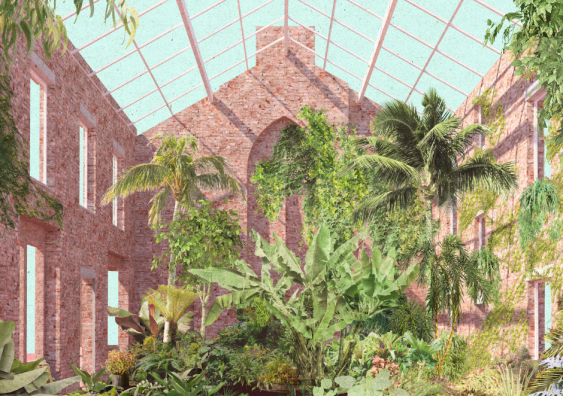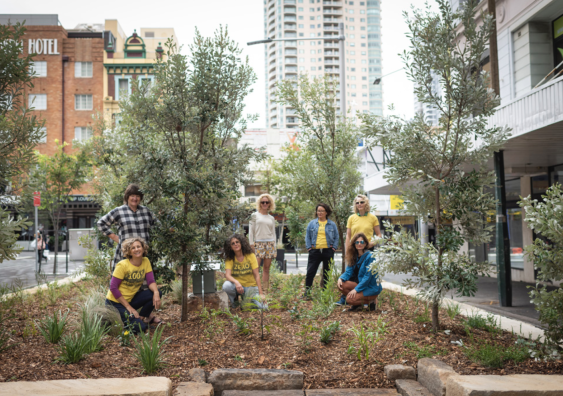The harbourside precinct demonstrates how art can help revitalise communities, respect cultural heritage and re-imagine public space, says its precinct-wide curatorial advisor.
A/Prof. Fenner’s research focuses on aspects of place and curatorial place-making. She has curated more than 40 exhibitions of Australian and international art, and worked as a curatorial consultant for government and industry, most recently as the public advisor on the new Metro Martin Place precinct being delivered by Macquarie Group.
At Barangaroo, she has advised Cultural Capital and Infrastructure NSW (INSW) on the recently launched Barangaroo Art Implementation Plan 2023. Over the next few years, she is working with INSW, community stakeholders and developers – Aqualand, Crown, Lendlease – to ensure the quality and consistency of public art across the Bararangoo precinct.
The plan outlines the NSW Government’s multi-million-dollar commitment to public art, specifically creative responses to Barangaroo’s geography, rich history and future. It identifies culture and identity as themes for exploration through integrated, site-specific installations, she says. “This focus on fostering community, foregrounding the natural environment and connecting to Country is a priority across Barangaroo.”
More art to come for Barangaroo
A/Prof. Fenner recently convened an Aboriginal and Torres Strait Islander curatorium to work with her on commissioning public art for Barangaroo Reserve, the waterfront parklands at the northern end of the site that opened to the public in 2015. The Reserve reimagines the pre-colonial headland as it was before industry; the early 19th century altered its contours and replaced native vegetation with maritime infrastructure.
“Artists may consider the possibility of telling stories of place using objects, landscape forms or other interventions,” A/Prof. Fenner says. “The scope of the artist brief will be finalised by the curatorium once research into the site and community consultation is completed.”
In the adjacent area of Central Barangaroo, themes of identity, culture and community are embedded in AKIN’s Country-led design to transform the industrial concrete apron at the heart of Barangaroo into open space. A/Prof. Fenner was an advisor to the jury (chaired by Paul Keating) that presided over the Barangaroo Harbour Park Design Competition in early 2023.
A First Nations-led team, AKIN brings together Indigenous designers Yerrabingin, Sydney architectural firm Architectus, former Head Designer for Bangarra Dance Jacob Nash, high-profile sculptor and installation artist Chris Fox, and biocultural resilience and sustainable design experts Flying Fish Blue, with Arup as engineering consultants.
The park will include public artworks or ‘vessels’ revolving around water, wind, and moon, natural elements of significance in Indigenous knowledge systems. Rooted in First Nations’ wisdom and heritage, the design draws together landscape, art, and architecture to create a place of connection, reconciliation, and ecological regeneration.
“The design in its totality promotes a sustainable and culturally respectful relationship with place,” says A/Prof. Fenner. “Connection to Country is fostered by the seamless weaving together of landscape and art, which will become natural gathering places for decades to come.”
The increasing interdisciplinarity of public art
Increasingly contemporary public artworks are blurring the boundaries between architecture, landscape and art, she says.
In 2015, the prestigious Turner Prize for British artists under 50 was won, not by a visual artist, but a direct-action collective Assemble tackling urban dereliction in the infamous Granby Triangle in Liverpool. Assemble, who work across art, design and architecture, partnered with the local community to restore terraced houses that had suffered for decades following the 1981 Toxteth riots.
“The recognition of Assemble’s practice as ‘art’ represented a major shift in the contemporary art world. It signalled acceptance of an interdisciplinary trend that has been gaining traction in recent years,” she says.
Their interdisciplinary collaborative working practice was lauded for offering “alternative models to how societies can work… show[ing] the importance of artistic practice being able to drive and shape urgent issues”.

Wintergarden, part of Assemble's Turner art prize winning Granby Four Streets Regeneration Project in Liverpool, UK. Image supplied.
AKIN’s re-imagination of Harbour Park offers its own interdisciplinary model for driving urgent change, A/Prof. Fenner says. According to Yerrabingin, who are managing the creation of Harbour Park, design thinking and Indigenous knowledge can disrupt Indigenous disadvantage and create intercultural opportunities for future generations to thrive.
CEO and co-founder Christian Hampson describes the project as “much more than a park”. “It's a place to celebrate an enduring culture and to move with Country, acknowledging and experiencing our collective past and present while dreaming of our future,” he says.
“We hope this new chapter inspires all our young people, fanning the embers inside them into a fire as the future artists, architects, designers, and engineers of our cities and our nation.”
Its public art feeds into this focus on culture, country and community building. For example, the water vessel will form a connection to the harbour, creating a place of gathering and ceremony; the wind vessel will ‘collect’ the people who pass through and give voice to the winds, its stories, songs and languages.
These design-integrated approaches to public art represent a dramatic shift from Sydney’s historical pieces aimed at beautifying city spaces or memorialising colonists and civic leaders, A/Prof. Fenner says.
The social value of public art is recognised more broadly today, in part due to the City of Sydney’s substantial investment over the last 15 years, with many temporary and permanent installations reflecting our growing climate concerns, she says.

The Barlow Street Forest, by the Dirt Witches, in Sydney's CBD is a micro-forest of critically endangered Eastern Suburbs Banksia Scrub created by environmental and climate activists as a reminder of the plants once common between Botany Bay and North Head.
The Dirt Witches’ Barlow Street Forest project, for example, is a micro-forest incorporating more than 30 species of critically endangered Eastern Suburbs Banksia Scrub. The cross-disciplinary collective of environmental and climate activists presented a poetic reminder of the 5300 hectares of scrub that once stretched between Botany Bay and North Head.
“The strategy of re-planting urban environments has gained traction internationally in recent years,” she says. Accompanying the opening of the new wing of the Art Gallery of NSW in late 2022, one of the world’s iconic environmental art projects was relaunched.
“The Moreton Bay fig tree that stands beside the Gallery is an extension of Joseph Beuys’s 7000 Oaks: City Forestation Instead of City Administration, in Kassel, Germany, a fact that had been largely forgotten here in Australia,” she says.
Curators must think holistically for their work to be relevant in this globalised world, she says. It requires a return to the original meaning of curator, from the Latin curare meaning to care for or cure.
“It’s no longer about curating just objects, but the stories and histories that are embedded in and embody the places in which we live and work,” she says. “Filtering global ideas through the lens of the local can create supportive networks that empower individuals and their communities.”
Contact details:
Media Contact
Samantha Dunn
News & Content coordinator
UNSW Faculty of Arts, Design & Architecture
0414 924 364
